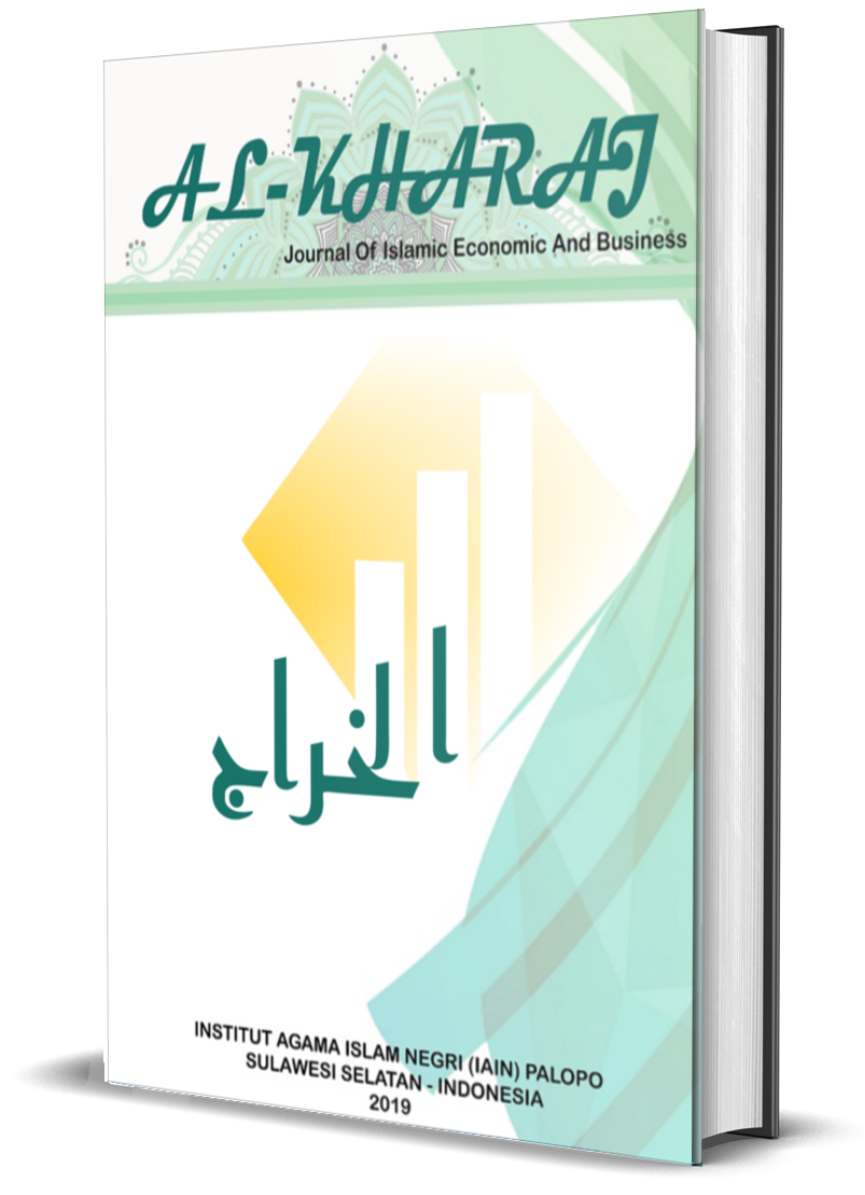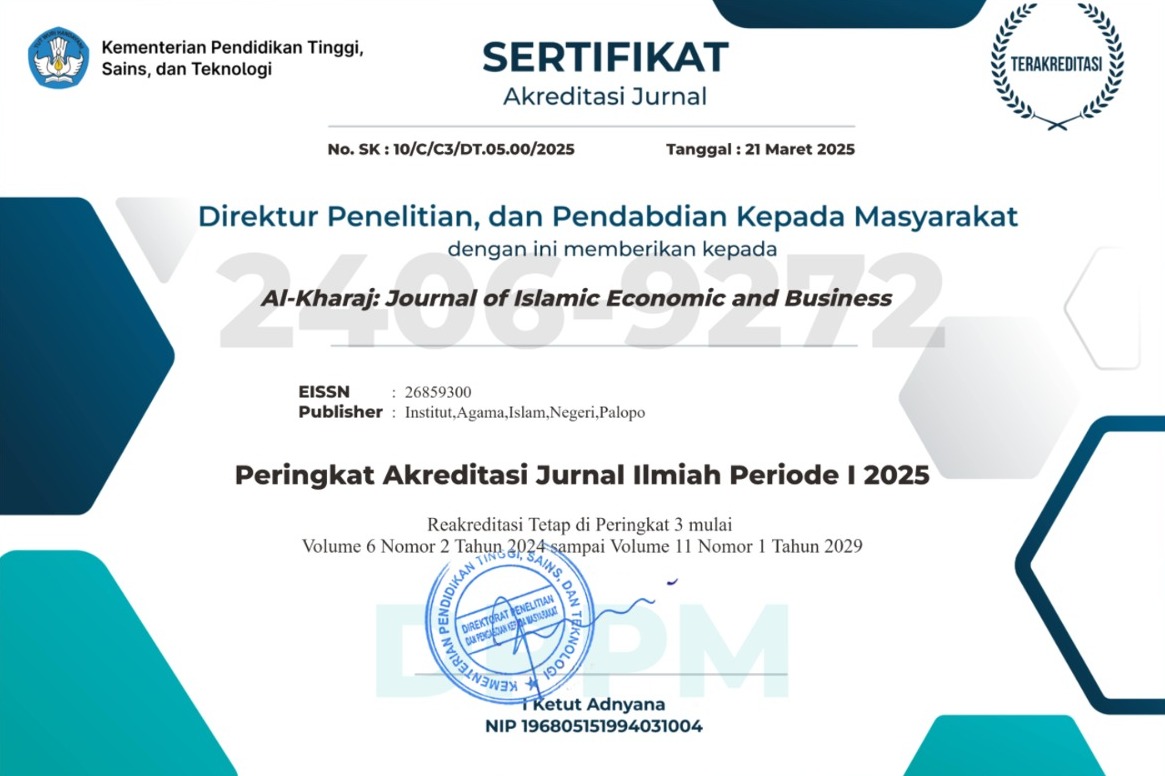Industrial Competitiveness through Porter's Five Forces Framework
DOI:
https://doi.org/10.24256/kharaj.v7i2.7370Keywords:
Islamic ethics; Porter’s Five Forces; business strategy; competitive advantage; shariah-based managementAbstract
This study explores the integration of Islamic ethical values into business competitive strategies using Porter’s Five Forces framework. The research employs a qualitative descriptive method through literature studies, drawing from academic journals, classical Islamic sources (Qur’an and Hadith), and contemporary scholars. The study examines how each of Porter’s forces threat of new entrants, bargaining power of suppliers, bargaining power of buyers, threat of substitutes, and industry rivalry can be aligned with Islamic ethical principles such as justice (‘adl), honesty (shiddiq), trust (amanah), and public benefit (maslahah). The findings indicate that integrating Islamic values can address weaknesses in Porter’s model, which is predominantly profit-oriented and economically driven. For example, ethical competition encourages market fairness and discourages monopolies; supplier and buyer relationships are guided by transparency and mutual respect; and innovation is seen as a means to serve, not to dominate. The incorporation of Islamic ethics into competitive strategy not only fosters sustainability and long-term business relationships but also transforms competition into a means of spiritual and social contribution. This approach suggests that companies operating in Muslim-majority environments or with shariah-based principles can adopt a more holistic and balanced strategy achieving competitive advantage while adhering to moral responsibilities. The study contributes to the development of Islamic strategic management literature and offers practical implications for Muslim entrepreneurs and policymakers seeking ethical and effective frameworks for industrial competitiveness.
References
Akbar, F. M. A. (2020). ANALISIS TANTANGAN DAN PELUANG PENGEMBANGAN UMKM HALAL DALAM ERA PASAR NASIONAL. 2(2), 105–130.
Al-Daamee, W. A. J., Meala, Q. A. H., & Al Zubaidi, H. H. A. (2024). Using Porter’s Strategic Model to Promote Sustainable Marketing In Light Of Behavioral Finance (An Analytical Study Of A Sample Of Small And Medium Enterprises In Najaf Governorate). Journal of Ecohumanism, 3(6), 294–306. https://doi.org/10.62754/joe.v3i6.4003
Anggraini, E., & Susanti, M. (2022). Persaingan Bisnis ( Studi Kasus Dealer Astra Honda Motor Di Kota Bengkulu ). Jurnal Entrepreneur Dan Manajemen Sains (JEMS), 3(1), 76–83.
Appiah, M. K., Possumah, B. T., Ahmat, N., & Sanusi, N. A. (2021). Do Industry Forces Affect Small and Medium Enterprise’s Investment in Downstream Oil and Gas Sector? Empirical Evidence from Ghana. Journal of African Business, 22(1), 42–60. https://doi.org/10.1080/15228916.2020.1752599
Baird, K., Nuhu, N., & Jiao, L. (2024). advantage and organisational performance and the. 303–332.
BEJLERI, E., & MEMAJ, Y. B. K. and G. (2024). Porter Framework vs A More Extended Framework. International Journal of Religion, 5(9), 115–124. https://doi.org/10.61707/8aa0e811
Bodendorf, F., & Franke, J. (2024). Examining the dynamics of bargaining power in buyer-supplier negotiations: insights from a case study in the German automotive industry. International Journal of Production Research, 62(16), 5828–5849. https://doi.org/10.1080/00207543.2023.2299678
Butarbutar, I. P., Purnamasari, N., & Safitri, K. (2023). an Analysis on Five Forces Dan Bcg Matrix for Apple Inc. Company. Maker: Jurnal Manajemen, 9(2), 229–240. https://doi.org/10.37403/mjm.v9i2.615
Citra Birru, A., Sudarmiatin, S., & Hermawan, A. (2022). Competitive Strategies in The Lodging Service Sector : Five Porter Analyses And Case Study SWOT Analysis. Journal of Business and Management Review, 3(1), 001–017. https://doi.org/10.47153/jbmr31.2732022
Downloads
Published
How to Cite
Issue
Section
Citation Check
License
Copyright (c) 2025 selmiana salam, Fitriah Ningsih, Muhammad Ilham, Murtiadi Awaluddin, Sudirman

This work is licensed under a Creative Commons Attribution-ShareAlike 4.0 International License.
Authors retain copyright and grant the journal right of first publication with the work simultaneously licensed under a Creative Commons Attribution-ShareAlike 4.0 International License. In line with the license, authors are allowed to share and adapt the material. In addition, the material must be given appropriate credit, provided with a link to the license, and indicated if changes were made. If authors remix, transform or build upon the material, authors must distribute their contributions under the same license as the original.









